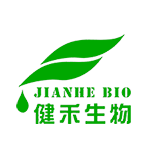Resveratrol
The Polyphenol Resveratrol (3,5,4'-trihydroxy-trans-stilbene) is a stilbenoid, a type of natural phenol, and a phytoalexin produced naturally by several plants in response to injury or when the plant is under attack by pathogens such as bacteria orfungi. Food sources of resveratrol include the skin of grapes, blueberries, raspberries, and mulberries.
Origin: Polygonum cuspidatum
Specifications:Resveratrol 50%;Resveratrol 98%
Origin: Vitis vinifera L.
Used part: skin, vine and stem
Specifications:Resveratrol 2% 5% 10%
Functions:
Antioxidant; anti-aging; Cardioprotective effects; Skin protects
Resveratrol is a natural antioxidant, which can reduce blood viscosity, inhibit platelet coagulation and vasodilation, keep blood smooth, prevent the occurrence and development of cancer, and has the preventive and therapeutic effects of anti atherosclerosis, coronary heart disease, ischemic heart disease and hyperlipidemia. Tumor suppressor also has estrogen like effect and can be used to treat breast cancer and other diseases. It can delay aging and prevent cancer. It is high in red grape skin, red wine and grape juice. Studies have shown that the integrity of the chromosome will be destroyed with human aging, and resveratrol can activate a protein to repair the health of the chromosome, so as to play a role in delaying aging. In conclusion, resveratrol has antioxidant, anti-inflammatory, antithrombotic, anti-cancer, anti-cancer, anti hyperlipidemia, antibacterial and other activities.
IUPAC
5-[(E)-2-(4-hydroxyphenyl)ethenyl]benzene-1,3-diol
Matter Classification
organic
Appearance
Grayish white to yellowish brown powder
Acidity and Basicity
acidness
Export Formalities
A,B
N,M,R,S
Risk Code
R37/38-41-36/38-36-43-22


